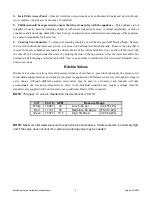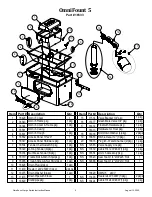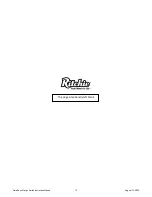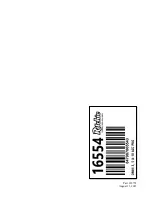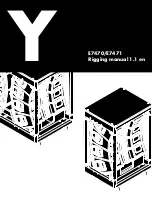
L. Electrical Connection
- The electrical installation should be made and maintained by a qualified electrician
conforming to national and local codes. A means for disconnection must be incorporated in the fixed wiring in
accordance with the wiring rules. For wiring connections, see wiring diagram. Make connections according to the
wiring diagram below.
WARNING: ANY ELECTRICAL SERVICE MUST BE INSTALLED AND MAINTAINED BY A
QUALIFIED ELECTRICIAN.
WARNING: DISCONNECT POWER IF THE WATER SUPPLY IS TO BE SHUT OFF FOR AN
EXTENDED AMOUNT OF TIME. FAILURE TO TURN OFF POWER CAN RESULT IN DAMAGE TO
THE WATERING FOUNTAIN.
WARNING: THIS INSTALLATION MUST BE MADE AND MAINTAINED IN STRICT CONFORMITY
WITH NATIONAL/LOCAL PLUMBING CODES AND NATIONAL/LOCAL ELECTRICAL CODES (CSA
IN CANADA). THE APPLICABLE PROVISIONS OF THESE CODES TAKE PRECEDENT. FAILURE
TO MAKE AND MAINTAIN ALL INSTALLATIONS PROPERLY MAY RESULT IN LOSS OF
LIVESTOCK, PERSONAL INJURY, OR DEATH.
NOTE:
National/Local electrical codes may require livestock waterers installed in feedlots in open feeding
area to be grounded by a separate stranded copper grounding conductor or at least no.6 AWG
terminating at a point where the branch circuit receives its supply. Check with local authorities.
M. Fenwal Thermostat
– The adjustable range is from 0
o
. F (-18
o
C) to 100
o
F (38
o
C).
Thermostat is not preset at factory. Fill the trough to proper water level. Check the water
temperature with a thermometer. The next morning, check the water temperature again. If the
water is warmer than desired, turn the thermostat down. If there is ice forming on the surface of
the water, turn the thermostat up. Only slight adjustments should be made to the thermostat at
any time. A 1/16 turn on the thermostat will change the water temp. 7
o
F (4
o
C). 44
o
F (7
o
C) in
the trough represents the most economical operation. Counter clockwise raises the thermostat
setting.
N. Final Water Connection
– Connect the top of the supplied hose to the valve, cut hose to proper length, and slip
onto the barb fitting of the valve assembly. Clamps and fittings are furnished to secure the connection.
O.
Seal the Base
- After the unit is completely installed, apply a bead of caulking around the base of the fountain
to ensure no wind enters through the base of the unit.
NOTE:
Sealing the bottom of the unit from cold air is an important aspect of the unit's thermal
performance.
P. Drain Plug
– Insert the drain plug firmly into the drain hole in the center of the trough.
Q. Water Seal Drain
– Install the small drain plug into the drain hole in the water seal groove around the valve
chamber seal. This plug may be removed during the non-freezing periods to allow the water seal groove to drain.
R. Float Adjustment –
Open water-supply shut-off valve, check for and fix any leaks. Adjust float for a water
depth of 2 inches below top of trough or overflow pipe by adjusting the thumbscrew or wing-nut. With the valve
functioning properly and the water level set at the proper level, you may install the valve cover. The water seal
groove between the frame and valve cover must be filled with liquid to create a protective seal from cold winter air
getting to the valve.
OmniFount Large Series Instruction Manual
4
August 13, 2022






